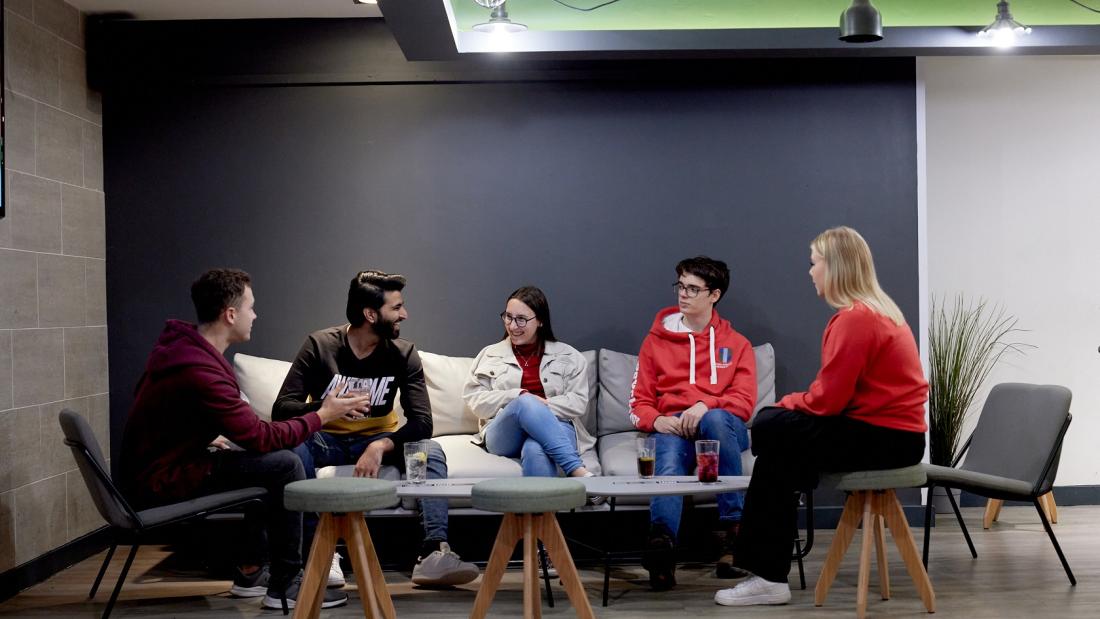The study, led by researchers from Bangor University and funded by the Nuffield Foundation and the British Academy, looked at the impact of community and social connections on people’s ability to access advice and support to resolve social welfare problems.
They found that the size and interconnectedness of people’s social networks provide only limited help in resolving social welfare problems they face. The most important factor is the nature of the problem itself, with benefits and financial problems typically being easier to sort out compared to those relating to housing, social care, special educational needs and mental health.
Lead researcher Dr Sarah Nason, from Bangor University’s School of History, Law and Social Sciences explained: “Debt, benefits, special educational needs, healthcare issues, these are everyday problems that many of us face, and it’s only natural to turn to people you know and trust for help and advice. However, we found that having to talk to more people or support services was an indicator that the problem was more complex and difficult to resolve.”
The team studied four distinct areas across England and Wales: Bryngwran, a village on Anglesey in North Wales; Deeplish, a district of Rochdale in Greater Manchester; the town of Dartmouth in Devon; and three wards in the London borough of Hackney.
In total, the researchers conducted individual interviews with 191 people, mapping out who they spoke to on a regular basis, such as friends, family, work colleagues or community volunteers, and who they might turn to with any problems relating to social welfare. They also asked how many of these contacts knew each other, to determine how well-connected the person’s social network was.
The researchers also spoke to community organisations and local authorities, identifying available sources of formal and informal advice and community support in each area.
They found that individuals living in the rural communities in Devon and North Wales had larger networks with more interconnections, compared to smaller, less well-connected networks of people in the urban locations in Hackney. In Deeplish in Rochdale, social networks were comparatively small, but quite well-connected. This was linked to ethnicity, with the primarily South Asian participants in Deeplish also having networks with the highest proportion of family members. For those with White ethnicity, people who identified as English generally had smaller social networks than those identifying as British or Welsh. The most interconnected networks were amongst people who identified as Welsh.
The researchers also found greater similarities between social networks within each case study community than between those of people with individual characteristics, such as age, gender, employment status or disability across the case study areas.
Dr Nason said: “Our research isn’t intended to be statistically representative of the case study areas, as we only spoke to a relatively small group of people in each community. However, from those interviews and from our analysis, location and ethnicity appear to be important factors in understanding how people relate to their community and access support. This highlights how important it is to provide local, community-based and culturally sensitive support and advice rather than ‘one size fits all’ services at a national level.”
Although many services are moving to ‘digital by default’ rather than offering face-to-face support, digital services did not meet many people’s needs. In all case study areas, interviewees said that accessing help and advice locally and in-person was important to them, with local access being seen as essential to many people.
Despite the differences between the four areas studied, the researchers found that the size and connectedness of social networks had a limited impact on the likelihood of people’s social welfare problems being resolved.
The biggest factor in resolving problems was the nature of the problem itself. Across all four areas, people with welfare benefits or financial problems were more likely to have received help from formal advice services and to have their problems resolved, than those with problems around housing, social care, special educational needs provision or mental health services.
“There are well-established processes for dealing with welfare disputes or debt, and although these can be daunting, with the right support and advice these issues generally get resolved,” said Dr Nason. “However, it’s noticeable that the problems which were least likely to be resolved relate to local authority services which have seen substantial budget cuts over recent decades, and where services are stretched to the point of failure. Stronger social networks and more support and advice can’t completely compensate for this lack of investment in public services.”
Other factors impacting people’s ability to get help were lack of education around rights and entitlements, limited awareness of advice services, feelings of stigma or shame in seeking help, and loss of trust in the state. However, the significance of each of these factors was different across the case study areas. For example, stigma/shame was perceived as a particular issue in rural North Wales, lack of formal education was a challenge in Rochdale, and mistrust of the state was highest amongst marginalised communities in Dartmouth and younger people in Hackney.
The study highlights the important role played by community centres or hubs, which provide vital services to their local community, including social welfare advice. However, the researchers caution that these organisations are often under-resourced and cannot be a substitute for more formal legal advice services.
“Across all the communities we studied, the local hubs or centres were really valued by people, providing day-to-day support such as food banks,” explained Dr Nason. “However, some problems that people face need specialist legal advice, and these community centres rely on being able to signpost people on to more formal services. Without proper funding for the formal advice sector, problems continue. Communities may be able to access help, but there won’t be access to justice.”
To read the full report please go to: https://swladviceandcommunities.com/





